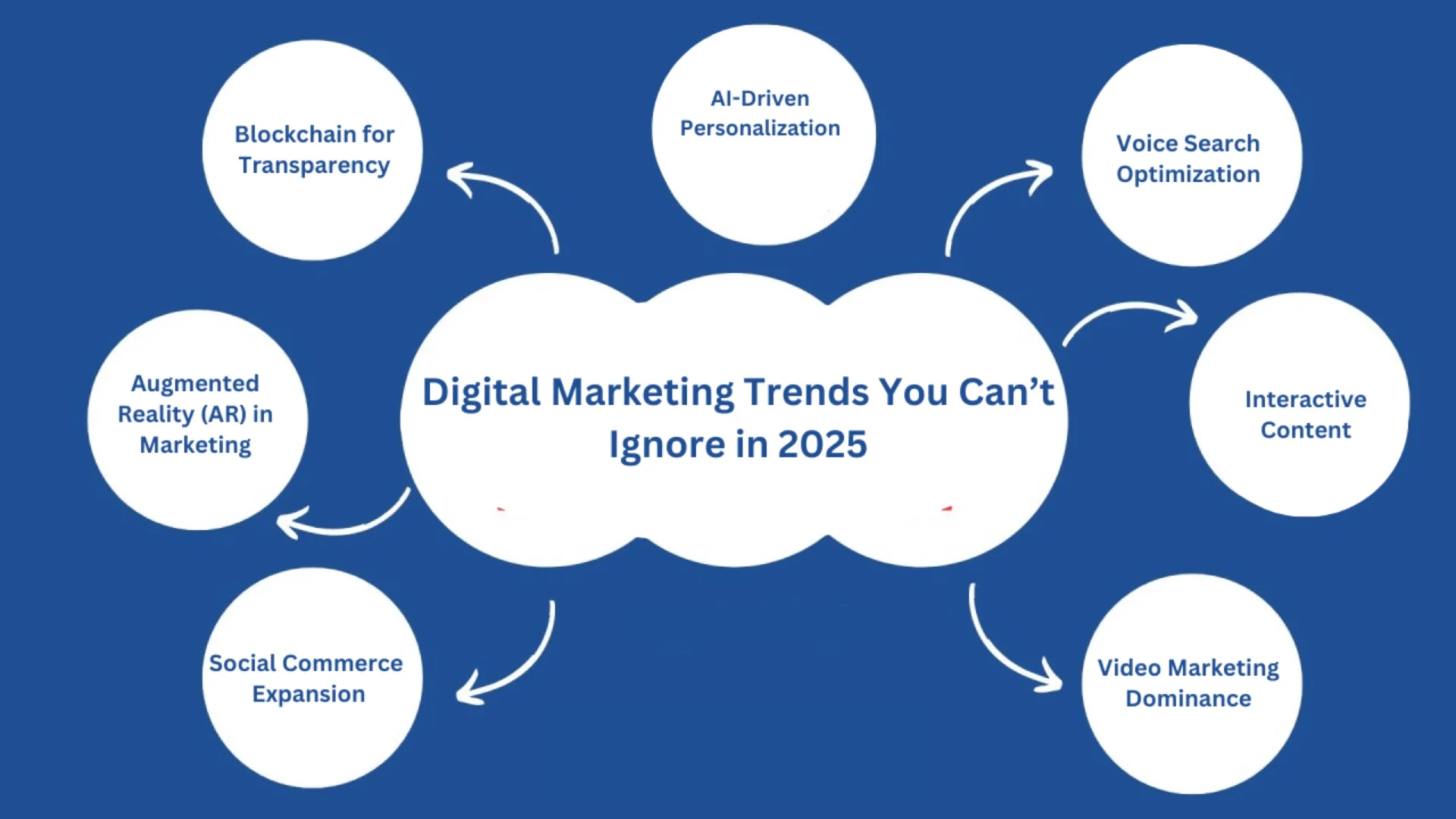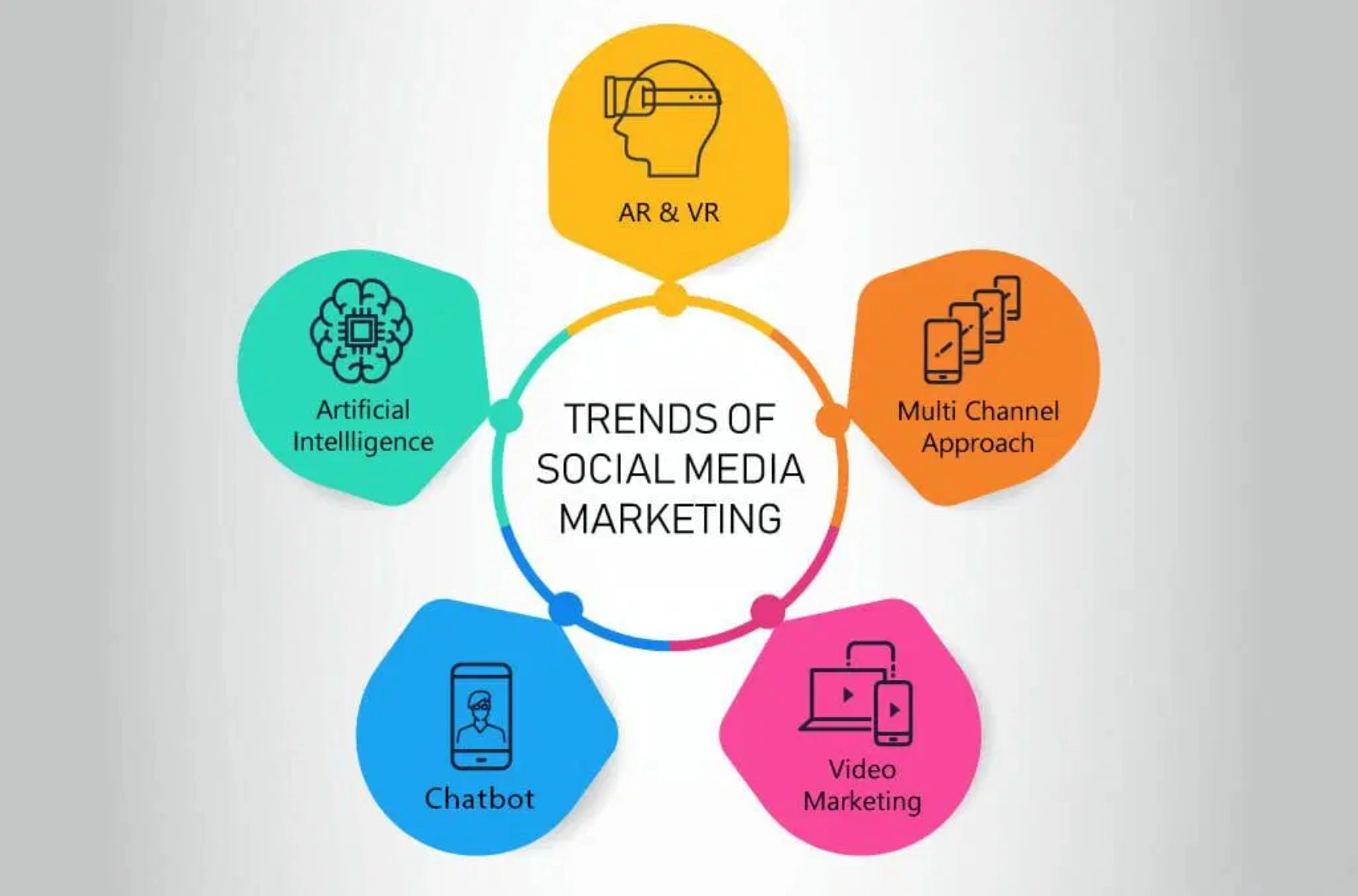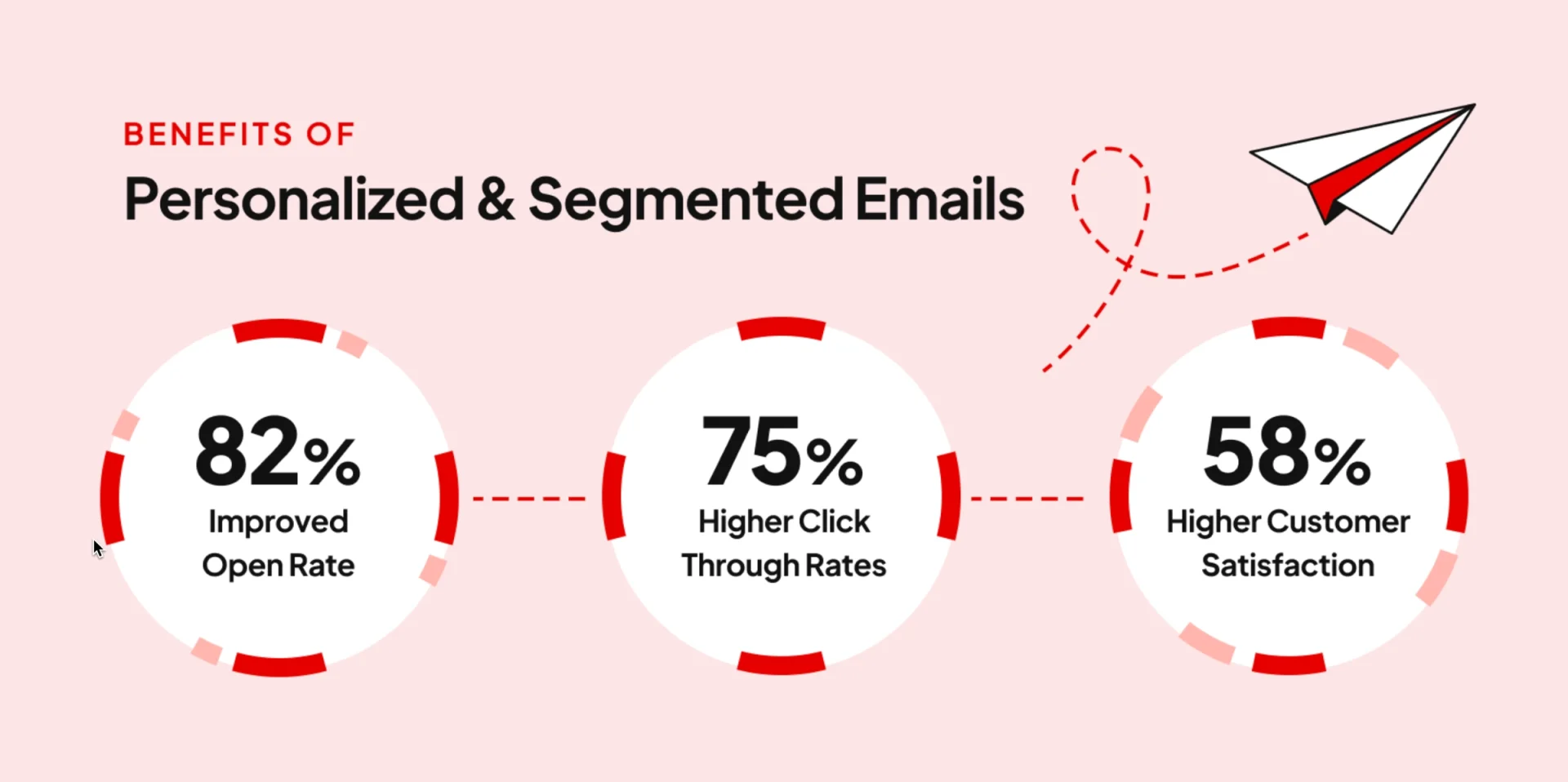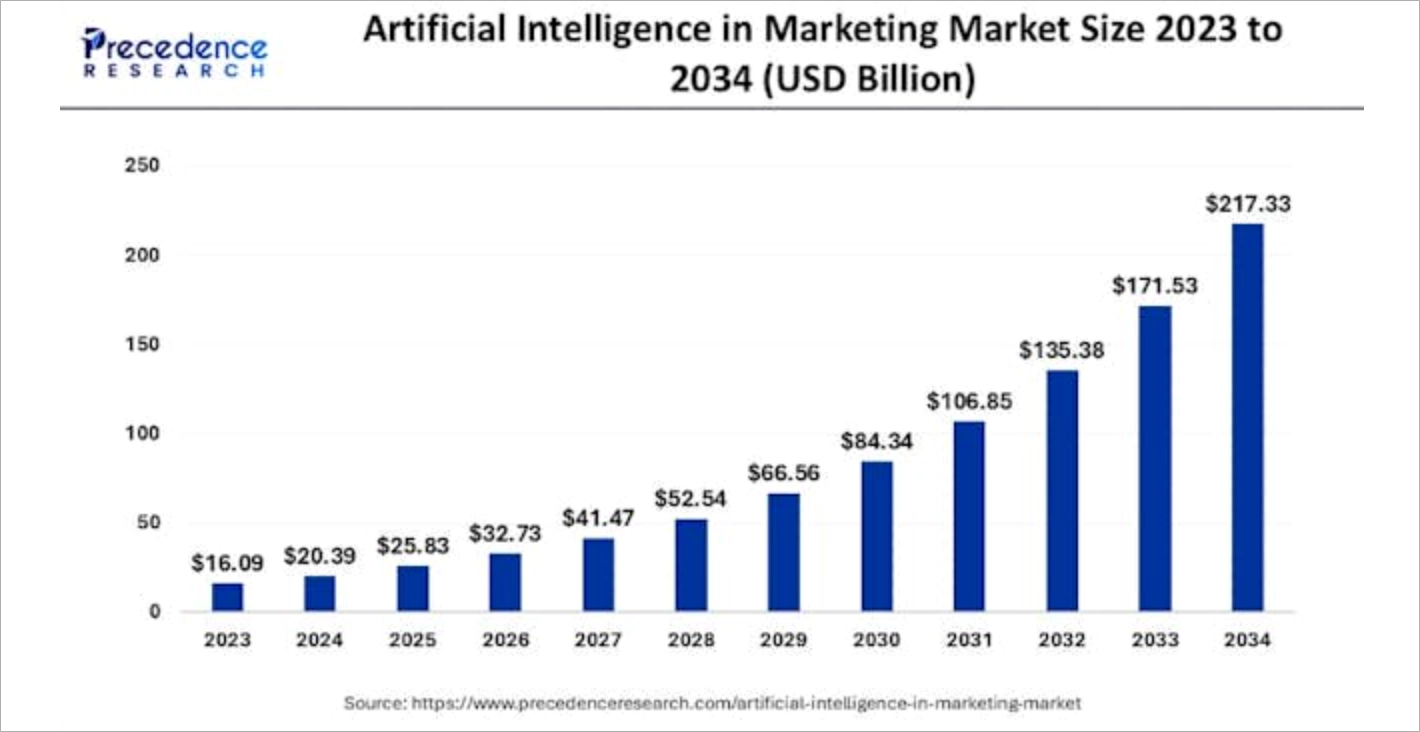Digital marketing trends keep shifting fast, shaped by new technology, changing customer habits, and expanding online platforms. As 2025 unfolds, staying ahead of these changes is key to staying competitive.
Turning trends into measurable results requires more than ideas—it takes smart execution. Landing pages are often the bridge between interest and action, giving you a focused, conversion-ready space to turn ad clicks, email opens, or social engagement into booked jobs or sales.
This article explores 25 marketing innovations grouped by channel, each with the potential to help your business grow, adapt, and stay relevant in 2025.

What Are the Key Trends in Digital Marketing for 2025?
In 2025, digital marketing is driven by AI-powered personalization, social media as a search tool, and privacy-friendly, cookie-free data strategies.
AI has moved from being a helpful tool to the core of marketing performance. It powers ad targeting, predictive analytics, and real-time personalization—helping brands refine messages, automate tasks, and adapt instantly to audience behavior.
Common applications include chatbots, product recommendations, and automated email flows. AI also improves segmentation and analysis, enabling highly tailored customer experiences, better timing, and more efficient ad spend.

Social media is becoming a discovery engine. Platforms like Instagram, TikTok, and Facebook now function like search tools, so brands create content designed to rank, engage, and tell stories visually. Participating in trends boosts visibility, while built-in shopping features like Instagram Shops and TikTok Shop let customers buy without leaving the app—reducing friction and increasing conversions.
Voice and visual search are also reshaping SEO. Smart speakers and mobile cameras mean marketers must target long, conversational keywords and optimize visuals—images, short videos, and even AR elements—for searchability.
User-generated content (UGC) is gaining value as people trust real customer posts more than ads. Brands encourage reviews, user videos, and challenges to build credibility and community—especially when amplified by influencers or loyal fans.
The end of third-party cookies makes first-party data critical. Businesses now gather it through quizzes, gated content, and feedback forms to stay privacy-compliant while still understanding their audience.
These aren’t passing fads—they’re shifts in how digital marketing works. Staying flexible, adapting quickly, and acting on real-time feedback is the only way to keep pace.
Digital marketing is changing fast. Landing pages help you test, adapt, and win—without wasting ad spend.
1. Content Marketing Trends
In 2025, content marketing centers on three key values: quality, authenticity, and relevance. The past few years saw a major shift, as many marketers tested AI for quick content creation. While it brought speed and scale, Google’s crackdown on repetitive AI-generated content proved early skeptics right.
Still, AI remains central to content marketing. It now supports—not replaces—marketers by improving workflows and helping deliver smarter, more focused content. At the same time, brands explore new ways to build trust, increase visibility, and stay relevant. Here are the key trends shaping content strategies in 2025:
#1 AI-Enhanced Content Creation
AI tools help marketers with research, drafting, design, and analytics. These tools simplify tasks like SEO optimization, headline testing, and visual generation. More brands use AI to create custom content for segmented audiences and to scale production.
#2 Focus on Topical Authority
Topical authority drives stronger SEO results. Brands now build topic clusters and structured content maps to rank better on search engines. Google rewards sites with deep, connected content that shows expertise. Businesses are responding with long, well-organized content that strengthens their subject credibility.
#3 Personalization and Dynamic Content
Brands personalize content using user behavior, preferences, and demographic data. AI-driven tools help identify patterns and adapt messaging in real time. This leads to dynamic content—like personalized emails or landing pages—that reflects users’ specific needs and drives higher engagement.
Turn trends into results! Start creating personalized landing pages for every strategy with Landingi.
#4 Purpose-Driven Content with Balance
Consumers expect brands to reflect values like sustainability and ethics. In response, marketers highlight social impact initiatives and responsible practices. This content supports brand reputation and meets growing expectations for corporate responsibility. The message must feel honest, not promotional.
#5 High-Quality, Long-Form Content
Long-form content remains essential for building trust and driving search traffic. Brands invest in detailed guides, whitepapers, and e-books to educate audiences and demonstrate expertise. While short content still works for social, longer pieces help brands go deeper and stay relevant in search rankings.
2. Social Media Marketing Trends
Social media marketing in 2025 focuses on real connections, engaging video formats, and platform-driven shopping. Short-form video content has transformed how brands attract attention, delivering fast, impactful messages that resonate with users.

Social platforms still offer massive reach and strong ad performance—but now they do more than promote, they convert. On Facebook and similar apps, users can shop without leaving the platform. This shift requires marketers to align strategies with how people browse and buy. These are the top social media marketing trends shaping 2025:
#1 Growth of Short-Form and Vertical Video
Short, vertical videos remain the most powerful format on social media. TikTok, Instagram Reels, and YouTube Shorts dominate attention. Brands invest in mobile-first videos that grab interest within seconds, driving engagement, website traffic, and sales.
#2 Expansion of Social Commerce
Buying directly through social apps is becoming normal. Platforms like Facebook and Instagram support in-app purchases, product tagging, and live shopping. Brands use these features to simplify the shopping journey and increase conversion.
#3 Demand for Authentic, Relatable Content
Buying directly through social apps is now standard. Facebook, Instagram, and TikTok support in-app purchases, product tagging, and live shopping. These features shorten the buying journey and boost conversion rates.
#4 Focus on Community Engagement
Brands are creating tight-knit digital communities on Reddit, Discord, and private Facebook groups. These spaces encourage discussion, feedback, and loyalty—turning followers into long-term supporters.
#5 Cross-Platform Strategy Is a Must
With users active across multiple platforms, a coordinated presence is essential. Brands adapt content to each channel’s style while keeping messages consistent, ensuring visibility on TikTok, Instagram, LinkedIn, YouTube, and beyond.
Maximize your impact! Craft high-converting landing pages for your SM campaigns with Landingi.
3. SEO Marketing Trends
SEO in 2025 revolves around AI integration, user intent, and delivering a better experience. AI tools now automate SEO tasks, analyze performance, and guide smarter strategy decisions. Semantic search is increasingly important—search engines focus on meaning, not just keywords—so content must match real user intent.
User experience is also critical. Google rewards fast-loading, mobile-friendly sites with valuable, easy-to-navigate content. To stay competitive, marketers are focusing on these key SEO trends:
#1 AI and Machine Learning for Smarter SEO
AI now powers many SEO tasks, from assessing content and fixing crawl issues to analyzing backlinks and competitor data in real time. Machine learning helps understand search intent and react quickly to algorithm changes, boosting efficiency and accuracy.
#2 Stronger Focus on E-E-A-T
Google prioritizes sites that demonstrate Experience, Expertise, Authoritativeness, and Trustworthiness. Brands highlight author credentials, cite credible sources, and share first-hand insights to improve rankings and build trust.
#3 Building Topical Authority Through Content Clusters
Brands create content clusters around key themes, linking pillar pages to related subtopics. This structure improves relevance, clarifies site hierarchy for search engines, and signals expertise.
#4 Refreshing and Optimizing Old Content
Updating older content with fresh data, new links, and improved formatting keeps it valuable and visible. Regular refreshes help maintain rankings and ensure accuracy.
Check the power of AI-driven SEO optimization – improve your search engine rankings with Landingi!
#5 Voice Search and Conversational SEO
With voice-activated search growing, content must answer question-based and natural language queries. This means focusing on long-tail, conversational keywords, adding structured data, and including FAQ sections to meet voice search needs.
4. PPC Marketing Trends
PPC marketing in 2025 is driven by AI-powered automation, real-time personalization, and rising data privacy demands. Automation tools now manage much of the bidding, placement, and reporting work, allowing marketers to focus on strategy. These tools improve targeting, boost ROI, and enable faster decision-making.
As personalization grows, transparency and privacy compliance are essential. Marketers must deliver relevant, high-performing ads while respecting regulations. Here are the top PPC trends shaping paid media in 2025:
#1 Smart Bidding Powered by AI
AI-driven bidding uses real-time data to adjust bids based on conversion potential, eliminating guesswork and improving budget use. This automation boosts efficiency and frees time for strategy and testing.
#2 Predictive Analytics and Real-Time Adjustments
Predictive tools forecast performance trends from historical data, allowing proactive changes. Real-time optimization updates ads automatically—tweaking keywords, audiences, and placements to maintain results in dynamic ad environments.
#3 Hyperlocal Targeting for Location-Specific Reach
Advertisers can now target audiences by ZIP code, neighborhood, or even street. Hyperlocal ads are ideal for service businesses, delivering highly relevant offers based on user location.
#4 Growth of Visual and Interactive Formats
Video, carousel, and shoppable ads dominate engagement, offering interactive features like swiping, voting, or direct shopping. These formats hold attention and drive higher conversions.
#5 Integrated Cross-Channel Campaigns
Effective PPC spans multiple platforms, combining search, display, and social ads to guide users through the buyer journey. Multichannel attribution helps pinpoint top-performing touchpoints and optimize spend.
Stay on top of digital marketing trends! Create trend-inspired campaigns on Landingi now.
5. Email Marketing Trends
Email marketing in 2025 is powered by advanced personalization, real-time interaction, and precise audience segmentation. AI tools now help marketers speed up content creation and deliver messages tailored to each user’s behavior. Email has evolved from a delivery channel into an interactive experience platform.

Newsletters are also making a strong comeback, offering behavior-based content and location-specific updates that feel more relevant than ever. Here’s how email strategies are evolving in 2025:
#1 Personalization and Dynamic Content
Generic emails no longer work. Campaigns now adapt in real time to user preferences, behavior, and location. AI personalizes subject lines, recommendations, and send times—boosting engagement by speaking directly to each subscriber’s needs.
#2 Interactivity and AMP for Email
Embedded polls, forms, and image carousels turn static messages into interactive experiences. AMP (Accelerated Mobile Pages) for email allows users to book appointments, complete surveys, or browse products without leaving their inbox.
#3 Micro-Segmentation and Predictive Analytics
Audiences are divided into highly specific groups for targeted messaging. Predictive analytics anticipates needs, ensuring each segment receives content aligned with their stage in the customer journey.
#4 SMS Integration for Cross-Channel Reach
Email works best when paired with SMS. Coordinated campaigns deliver reminders, flash sales, and updates across both channels, meeting customers on their preferred platforms.
#5 Focus on Engagement and Loyalty
Brands prioritize building loyalty over sending high volumes of emails. Engaged subscribers receive exclusive content or rewards, while inactive users get personalized re-engagement campaigns—reducing churn and strengthening relationships.
Boost your email campaigns with conversion-focused landing pages – try Landingi for free!
What Is the Biggest Trend in Digital Marketing Right Now?
Artificial intelligence is the dominant trend in digital marketing, transforming how brands connect, create, and convert. While personalization, social commerce, and hyperlocal targeting are important, AI now sits at the core of campaign management, data analysis, and scaling efforts.
AI tools generate hyper-personalized content, deliver real-time analytics, and improve targeting for higher engagement and conversions. Chatbots and conversational AI provide instant support, boosting customer satisfaction. Machine learning enables precise audience segmentation, guides strategic decisions, and predicts customer lifetime value—helping marketers focus on their most valuable users.

In short, AI isn’t just enhancing digital marketing—it’s redefining it.
How do I Test Landing Page Variants Based on These Digital Marketing Trends?
To test landing page variants using 2025’s top digital marketing trends, start by focusing on one trend at a time. For example, you might use AI-driven personalization to change headlines based on a visitor’s location, swap a static hero image for a short-form vertical video, or add an FAQ section written in a conversational style to align with voice search optimization.
Create at least two versions of your page: a control version (your current landing page) and one or more variants that apply the trend you want to test. Use A/B or multivariate testing tools to split traffic evenly between them so the results are fair and accurate.
Before launching the test, decide what success looks like. If your goal is lead generation, you might track form submissions. For sales, measure completed transactions. For engagement, look at clicks on key elements or scroll depth.
Let your test run long enough to reach statistical significance, especially if your site doesn’t get a lot of traffic. When the results are in, analyze them and decide whether to make the new variant your control. Then, move on to testing your next idea.
Finally, document your findings. If AI-driven personalization increased conversions by 15%, make a note of it. Over time, this record will help you identify which trends deliver the biggest impact and shape a more effective landing page strategy.
How to Prepare for 2025 Digital Marketing Trends?
To get ready for 2025, build your AI skills and leverage automation to improve marketing performance. AI is becoming essential in campaign planning, content creation, and optimization—acting as a smart assistant that speeds up work without replacing human insight. Learning to write clear prompts and refine AI outputs will give you an advantage.
Authenticity remains just as important. Audiences expect content that reflects real brand values, so always review AI-generated material to ensure it matches your tone, voice, and audience expectations.
Customer experience will continue to be a top priority. The better you understand your audience’s needs and behaviors, the more effective your campaigns will be. Use AI to analyze data, personalize offers, and improve communication.
The right tools also make a big difference. Landingi is a powerful platform that helps you build and optimize landing pages with ease and speed. Its intuitive drag-and-drop editor, AI-driven landing page features, and seamless A/B testing let you launch campaigns faster and smarter.

What sets Landingi apart is how much control it gives non-technical marketers. You don’t need to code or rely on developers. With features like EventTracker and integrations with popular marketing platforms, you can manage the entire customer journey from one place. Whether you’re focused on lead generation, product launches, or email campaigns, Landingi helps you move from idea to execution without friction.
For marketers serious about boosting results, Landingi offers the flexibility, speed, and intelligence to stay ahead in a fast-changing digital space.
Master the 2025 trends in one place! Build, optimize, and win with Landingi today.
Apply the Top 2025 Trends to Build Landing Pages That Actually Convert
Landing pages are one of the fastest ways to turn 2025’s digital marketing trends into measurable results. This year’s focus on smart automation, personalization, and faster customer connections makes them more valuable than ever.
AI tools, immersive content, and real-time messaging can all boost performance—but only if they’re applied effectively. Landing pages provide a clear space to test, adapt, and measure these strategies. With strong design, focused copy, and quick updates, they can raise lead quality, lower ad costs, and speed up the sales funnel.
Use trends to solve real issues: lower ad costs, raise lead quality, or speed up your funnel. The right landing page tool makes this easier and faster. Landingi helps with that – offering templates, testing, and integrations to act on ideas quickly. Marketing success in 2025 comes from doing, not just knowing. Start building smarter pages now and turn trends into growth, not just noise.






